Growing with Grovemade
Grovemade was born from a collaboration between two friends, Ken Tomita and Joe Mansfield, who decided on a whim to “make cool stuff and have fun doing it.” Ten years later, with a small but mighty team, and a new Northeast Portland HQ, Tomita and Mansfield are doing just that. What started with a focus on iPhone cases, has blossomed into a plethora of pieces for desk, home, and everyday living, all crafted from natural materials like wood, wool, leather, and metal. We chatted with Ken about the past and future of Grovemade, cohesive teamwork, and customer-focused inspiration. Suffice it to say that we’re pretty excited to hear that the Ratio Eight is helping to fuel the creative minds of this team.

Grovemade came to be 10-years ago! Can you tell us more about how it all started?
It's amazing how time flies. I started the company with my friend Joe Mansfield - he is a serial entrepreneur, and his custom laser shop/ his house was right across the street from my carpentry shop, in Southeast Portland. We would toss a football back and forth across the street, scheming and dreaming. When the iPhone 3GS launched, Joe had the idea to make a high-quality, machined case for it out of natural materials. He'd been pitching the idea to machine shops around town, but no one was interested -- “too hard,” they said, so, we decided to do it ourselves! We had no idea what we were doing, but we just went with it. We took out a business loan to buy a CNC (Computer Numerical Control) machine -- basically, a router that can cut high-precision, three-dimensional shapes from wood, and worked our tails off to figure out how to do it.


It’s clear from your website alone that celebrating, and caring for, your team of employees is paramount at Grovemade. How did this contribute to what you looked for in your new headquarter's space?
We had a really unique target for our new headquarters -- it had to be zoned to allow for manufacturing (light industrial), while [also] being close-in to the city, and ideally in a walkable neighborhood. We also wanted a building that had character, (preferably historic rather than a cookie-cutter, typical, commercial building), since feeling inspired is critical to doing inspired work. When we started looking, there really weren't many options that fit the bill. I basically drew a circle around a map of Portland and said, 'the new building has to be within this circle.' Once you start stacking criteria like that, it limits your options. But, we actually were able to find the perfect building, [and] it was one of the first we toured. We're really intentional about our space, and how it works to bring together the team. We have a combination of manufacturing and production employees, and office/business administration employees, plus design, engineering, and photography all in house. We wanted our space to hold everything in a way that keeps all those people together, and feels unified towards a common goal. Our old space was about 5000 s.f., and the new HQ is 8000 s.f. So there's room to grow, and the biggest thing is that we own the building. We have a plan to improve it over the years, and really make it our own. The proximity to Peninsula Park is [also] a nice perk. During breaks, we'll go for team walks through the park. Sounds cheesy, but it's great to step out to get the fresh air!


Like Ratio, you’re proudly based in Portland, Oregon! Do you do most of your manufacturing in-house, and how has this changed over the past decade?
We are! Our entire business model has changed over the years, and that has led to a lot of changes in how much we do in-house vs. out-of-house. Our current philosophy is that we leverage our in-house manufacturing when it gives us an advantage, and work with mostly local vendors, when they're more proficient at whatever the process is. The desk pen we just launched is a good example. It requires a really specific type of machine to make (called a Swiss Screw Machine), and we worked with a local vendor in Vancouver, Washington to machine the pen parts. We work with another local vendor to machine the base metal for the stand. In house, we manufacture the hardwood inserts, do all the assembly and quality control, and make the custom packaging. It wouldn't have made sense to do it all ourselves. We like to keep our team small and nimble, so that means we work with outside vendors more and more.
At first, our entire product lineup was iPhone cases, and we were doing 100 percent of the manufacturing in house. Machining the cases, laser engraving art, sanding, finishing, etc. But now, iPhone cases represent five percent of our total revenue. We've totally switched our product lineup and business model. Right now, we do most of the manufacturing for most of our products. Woodworking, leatherworking, all assembly (except for watch modules), some metalwork, all in-house. The majority of the vendors we work with are also in the Portland area, and it really helps us keep a close eye on the process and the quality. It's outsourced, but still close by.


Your business model is incredibly inspiring to us. In layman’s terms, would you mind explaining how your approach to vertical integration, and product launches works? How has this become a competitive advantage for you?
Vertical integration basically allows us to be fast and flexible, and it gives us control over the whole process. When we say vertical integration, we mean that our company does every step of the product life-cycle. It starts with strategy -- ‘what product should we launch?’ Then it goes to design -- ‘what will the product look like, and how will it work?’ Then, engineering -- ‘how will we make the product?’ Once we get to this point, we bring in marketing, but not every product concept goes all the way through the pipeline. When marketing gets involved, we do all the photography in house, all the copywriting/positioning, building out the landing pages for the launch, and creating and sending the launch emails. Once it's launched, we manufacture most of the products ourselves, and do all the fulfillment and customer service. The whole product lifecycle happens under one roof.
Say we see a hole in the market, like when we launched the wireless charging pad in fall 2017. Within, no joke, a couple of weeks, we went from initial concept to launch. The tech world moves fast, so being able to get this product in front of people, in a professional way, means that we were the first movers to that market of high-end, natural material, well-designed wireless chargers. Now, it's totally saturated, but we had about a year head-start on the competition. Another example, in a different way, is the task knife we just launched. It was a very high-risk product because there wasn't a huge demonstrated need for it. So, because we control everything in house, we were able to launch with very low inventory to an early access list of fans, gauge demand, and wait to see how the product did before we ordered a higher quantity. Marketing and production were totally linked up within one day of the launch to forecast demand going forward and place the appropriate orders. If the product had been a flop, we could have canceled it with very limited losses because we kept the inventory low.

When you first started, you primarily focused on the manufacturing of iPhone cases, but it’s clear to see now, that you have a plethora of product offerings, from trackpads to planters, and more. What are some of your best-selling products, and do you have plans to keep expanding your product range?
Totally. It's changed dramatically, from 100 percent iPhone cases, to five percent iPhone cases, and 70 percent desk accessories. Our current best-sellers are our monitor stand genre of products, and lately, our new desk pen has been really moving!
We do have plans to expand, and we want to leverage the advantages from our vertical integration, which means launching many products each year. We're laser-focused on the workspace, so our product strategy evolves around learning more about that space and that customer base, and what needs they have. Our product research always starts with the customers and their needs. Our aim is to consistently deliver unique and beautiful designs that solve real problems for them. We've got some new things coming in early 2020 -- some new takes on classic desk products, some more office accessories and tools, and a complete revamping of our core products.

What inspires the team at Grovemade, and how do you continue to stay inspired after all this time?
Everybody is inspired by different things, but as a company, the biggest inspiration is our customer base. They're the reason we're still in business! And, the more we talk to and get to know them, the more we're blown away by the work they do. If our products can help to inspire their work, that's success. We did a focused research project this past summer where I talked on the phone with 15-20 of our core customers. The conversations were pitched as 15 to 20 minutes, but most ended up going 30 minutes, and one even went a full hour, and turned into this awesome business mentor situation. It's amazing what happens when you sit down and talk to your customers.
So that's where the product inspiration starts. Then, when we're in the design phase, we'll look at tons of products to help us refine what ours will be. A lot is based on our past products -- ‘what would the grovemade version of X look like?’ We have a very consistent material palette, very focused on natural materials (wood, wool, leather, metal). Then we're inspired by pushing the boundaries of functionality crossed with beauty, and we're always balancing the sculptural forms with the intended function. Sometimes, we go all-in on sculpture, like the measure collection. But our best products are usually where there's a combination of subtle functionality and sculptural appeal. Our catch-all is one of my favorite examples of this.

We have to know...what’s your new headquarters' coffee set-up like? Do you have one member of the team who has taken charge of coffee brewing?
Well, we recently upgraded big time with a new Ratio Eight! It fits perfectly with our other products -- it's really beautiful. We have a dedicated coffee station set up by our kitchen, actually on a furniture piece I built from before starting Grovemade. We've got a Baratza Encore grinder, a Kone filter, and the Ratio Eight in walnut and matte black. Before that, we had an old black and decker (I think), and a Chemex for pour-overs. The Ratio is functionally a huge improvement too because it's so easy to use. Way easier (and faster) than a pour-over.
Yeah, Nick, our marketing guy, is kind of obsessed with coffee, so he's taken charge of that. We haven't invested in a digital scale yet, but that's next on his list to round it out! For a while we were using Deadstock coffee beans, we've used Good Coffee, Tanager -- there are so many good roasters to choose from in Portland.

When you’re not designing, building, and scheming -- what does the Grovemade team like to do together for fun?
The team chemistry is pretty solid. There are about 15 full-time folks. We have several annual events -- a river trip in the summer, holiday party coming up, special lunches at Chen's Good Taste downtown. I think food is probably what unifies the team the most! We have several people who have food side hustles (Dashia has a baking company and makes delicious chocolate cookies, Nick and his wife make homemade bagels), so we like to get together around our long table and share a meal. Sean and Nick like to break into song randomly. Max is a movie buff. Cara is a yoga teacher. Etc., etc.

What else do we need to know about Grovemade, and what’s next for the business, and the team?
What's cool about Grovemade is how unique it is. The combination of the size, the products we create, the vertical integration. There aren't many companies out there like us. We're always changing and pivoting, but the core values of the company always get better; embrace truth, be open and put the team first, and stay consistent through all the changes. We're excited about the new products to come in 2020, and further out in the future, and we're excited about the potential of what we could be. We've changed so much in the past 10 years, that it's almost impossible to predict where the next 10 will lead us!
Website: Grovemade
Instagram: grovemade
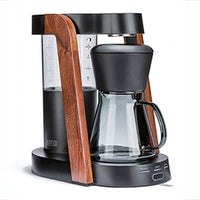 Ratio Eight S2
Ratio Eight S2
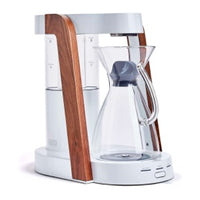 Ratio Eight Original
Ratio Eight Original
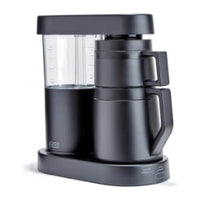 Ratio Six
Ratio Six
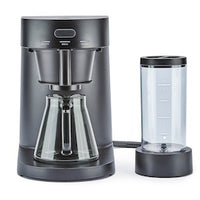 Ratio Four
Ratio Four
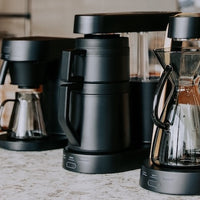 Compare Machines
Compare Machines






